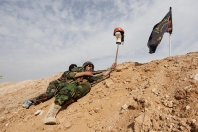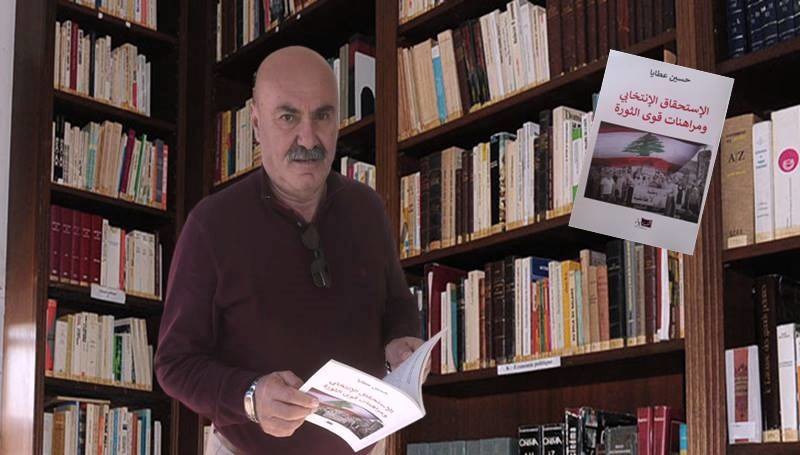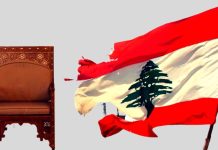Iraqi Shiite Foreign Fighters on the Rise Again in Syria
Phillip Smyth/Washington Institute
May 30, 2015
As regime and Hezbollah forces experience manpower and projection problems in Syria, Iran-backed Iraqi Shiite militias may be reassuming a greater combat role.
Over the past few months, Iraqi Shiite fighters have once again expanded their role in defending the Assad regime in Syria. Beginning in late 2012, these fighters — some of them experienced, others newly recruited — formed some of the most dynamic foreign units in the war. By spring 2014, many of them had been pulled from the Syrian front to handle increasing pressure from the so-called Islamic State (IS) in Iraq. Today, however, despite continued fighting in Iraqi hotspots such as Tikrit and Ramadi, these Shiite militias are increasingly adopting new responsibilities and reassuming older ones on many fronts in Syria.
Meanwhile, certain newer Iraq-based Iranian proxy groups have expanded their recruitment activities to bring fighters to Syria. This represents another ongoing shift: recruitment and deployment for Iraqi Shiite fighters is being handed over to more recently created Iraqi fronts within the expanding Iranian-controlled network of “Islamic Resistance” organizations. These efforts, which have been in process for months, demonstrate both positive and negative developments for Iraqi Shiite fighters in the recruitment and deployment arenas.
LAFA’S THINLY SPREAD FORCES
Groups that emerged from Liwa Abu Fadl al-Abbas (LAFA) — the first foreign-fighter-manned Shiite militia to set up camp in Syria, composed primarily of Iraqis — have been very active over increasingly larger stretches of Syrian territory. For the most part, their wider employment indicates further stress within the pro-Assad ranks.
From February to early March 2015, one of the LAFA network’s most active militias, Liwa Dhulfiqar, was deployed to the Latakia area in northern Syria. The group had primarily fought battles in and south of the Damascus area since 2013, so the northern shift indicated the regime’s stretched manpower and its need to use experienced fighters against renewed rebel and Sunni jihadist offensives.
In mid-April, some Liwa Dhulfiqar forces were moved south into a mountainous zone near the Lebanon-Syria border, despite the fact that Lebanese Hezbollah was already heavily deployed in the area. Conducting operations in Yabous and then Zabadani, Liwa Dhulfiqar claimed to have killed hundreds of rebel forces. This was not the first time the group had helped Hezbollah in one of the latter’s primary areas of operation — in December 2013, during the first combined Hezbollah/Assad regime offensive in Qalamoun, it was involved in battles near al-Nabak.
More recently, Liwa Dhulfiqar fighters claimed on May 24 that the militia had moved north to Idlib in order to help free regime troops besieged at the Jisr al-Shughour hospital. The group’s leader, Abu Shahid al-Jabbouri, was shown ordering rocket salvos and infantry operations in the field. Despite these efforts, the remnants of Assad’s forces had fled the area by May 27 as the hospital was overrun.
Liwa Dhulfiqar’s sister organization, Liwa Assad Allah al-Ghalib (LAAG), has also been active in the Alawite heartland. In January, photos were posted on social media claiming that sections of the group and its commander, Abu Fatima al-Musawi, were present in the Banias area. As this foray to the north ended, LAAG reportedly returned to more rural sections of Rif Damascus. Between April 21 and 25, the group publicly claimed to have lost six members during internecine battles in the area.
Around the same period, Liwa al-Imam al-Hussein, another LAFA-affiliated group, claimed to have sent fifty fighters to support operations in rural Latakia. This coincided with a visit by the militia’s leader, Sheikh Abu Karrar al-Bahladi, to the Assad family hometown of Qardaha. Joining Bahladi on the trip was Ahmed Hajji Sadi, commander of the so-called Rapid Reaction Forces (RRF or Afwaj al-Kafil), who had previously been setting up and commanding branches of his militia in Iraq.
CROSSPOLLINATION BETWEEN THE FRONT GROUPS
Another development within the LAFA network has been the increasing traffic inside Syria of fighters and commanders belonging to the Iraq-based Qaeda Quwet Abu Fadl al-Abbas (QQAFA). Led by Sheikh Auws al-Khafaji (a Sadrist splinter figure) and Sheikh Abu Kamil al-Lami (affiliated with the group Asaib Ahl al-Haq), QQAFA was formed in Iraq following the June 2014 IS advance. The militia, which is part of Iraq’s so-called Popular Mobilization Units/Committees (PMUs/PMCs), also includes leading fighters and commanders belonging to Liwa Dhulfiqar, the RRF, and Liwa al-Imam al-Hussein. Leadership elements from Liwa Dhulfiqar have even donned the group’s uniforms in Iraq and Syria, demonstrating their close links. In a December 2014 interview with the Lebanese daily an-Nahar, Khafaji claimed that QQAFA was a “natural extension” of LAFA, and he maintains links with major leaders of the network today.
According to Shiite militia social media feeds, Khafaji has been visiting Shiite foreign fighters in Syria since mid-2013, a period of time that witnessed growing publicity for Iraqi Shiite militias in that country. His visits increased in 2014, and he has made the trip this year as well. When an-Nahar asked him why Iraqi Shiite fighters were continuing to arrive in Syria, he declared that the “failure” to fight in Syria “was the cause of [the Islamic State’s] entry into Iraq.”
Earlier this month, during the lead-up to the three-night mourning period commemorating the Shiite martyr Zainab, uniformed QQAFA fighters were shown disembarking aircraft in Damascus. They were ostensibly in Syria to take part in the commemorations, but considering the regime’s need for manpower and the publicly developing links between Syria-based LAFA- groups and QQAFA, at least some of these fighters are highly likely to stay longer for combat tours.
QQAFA also appears to have deep links to Kataib al-Imam Ali, another newer and increasingly powerful Iranian-controlled Sadrist splinter militia. These links potentially reveal a more formalized means of tapping Sadrist splinter sources for manpower. Although recent QQAFA recruitment has not been exclusively aimed at Syria, the group may develop into a new recruitment leader given its leadership’s early, direct LAFA links and its history of enlisting fighters for Syria. And with the battlefield experience Shiite fighters have gained in Iraq, they could present a stronger combat element on the Assad regime’s side going forward.
NEW SPECIAL GROUPS AND RENEWED SYRIA FOCUS
While armed engagements involving LAFA network organizations have continued, other Iraq-based Iranian proxies appear to have taken a lesser role in the Syrian conflict. Asaib Ahl al-Haq, the Badr Organization, and Kataib Hezbollah all claimed to have sent their fighters back to Iraq and ended many Syria-focused recruitment programs by May 2014. Yet two other Iraqi Shiite groups — Kataib Sayyid al-Shuhada (KSS) and Harakat Hezbollah al-Nujaba (HHN) — appear to be taking on leading functions in Syria and continue to funnel fighters there.
The creation of KSS was first announced in spring 2013, as funerals for Iraqi Shiite fighters killed in Syria were receiving increased publicity. Initially, the Iranian proxy group was crafted as a front with links to Kataib Hezbollah and the Badr Organization, and it has been sending fighters to Syria ever since. HHN, a group led by Asaib Ahl al-Haq cofounder Akram Kaabi, was also part of the spring 2013 series of announcements revealing new Iraqi Shiite militias operating in Syria. In addition, HHN was the first such militia to announce operations in the Aleppo area.
Beginning less than a month after the IS takeover of Mosul and lasting until December 2014, KSS initiated timed recruitment programs online and on the ground, all coinciding with offensive actions involving the group in Syria. Many of these programs targeted males in Shiite-majority sections of Baghdad and especially the southern city of Basra.
HHN issued its own recruitment calls for Syria more recently, beginning in late March and mid-April 2015. These efforts centered on Iraq’s Maysan province, a hotbed of Shiite militia sentiment that provided the group with many of its initial recruits for Syria. The province has been home to numerous Iranian-backed Shiite militias since the U.S. occupation of Iraq, and many fighters consider it to be a martial hub, particularly the provincial capital of Amara.
Beginning in September 2014, KSS fighters were introduced into Syria’s developing southern front and have been involved there ever since. The section of the front tasked to the group included areas north of Deraa, with a focus on strategically relevant rural towns on the highway from Deraa to Damascus. As rebel forces advanced toward Damascus beginning in November, KSS countered them near the highly strategic town of Sheikh Maskin and the neighboring town of Namer. Even with these efforts, by January 2015 the rebels had seized large swaths of territory where KSS was operating. According to the group, Deraa-related operations have continued ever since. Although KSS has remained mum on the exact villages in which it is operating, it heavily promoted its Syrian activities in March-April through online posting of photos and videos.
As for HHN, the group has been playing a combat role in its traditional operational zones in the Aleppo area. On February 19, a flurry of Shiite militia social media posts claimed that eighteen HHN fighters had been killed while defending the Shiite towns of Nubl and Zahra in Aleppo province. And in early May, the group announced that it was fighting in East Ghouta.
One of the fighters killed in February, Hasnain Abu Kafil al-Sadi, exemplified the back-and-forth deployment shuffle between Iraq and Syria. According to Shiite militants who served with him, Sadi began operating in Syria in 2013, joining HHN and fighting alongside LAFA network organizations and Lebanese Hezbollah. Sometime in 2014 he went back to Iraq and fought in Samarra, Bayji, and Tikrit, only to return to the Syrian front this year.
IMPLICATIONS
Iraqi Shiite fighters never really left Syria, and they will continue to play a major role there. Their ability to be used as shock soldiers, infantry support elements, and reservists has helped establish their importance — in the span of just two years, these foreign fighters have moved from being auxiliaries to quintessential elements on the battlefield.
The LAFA network’s widening deployment area, particularly within Assad’s geographic powerbase, demonstrates the problems that regime forces are experiencing with manpower and armed projection. Similarly, Iraqi Shiite deployments in Qalamoun have highlighted the difficulties faced by Lebanese Hezbollah, while also showcasing how multinational Shiite militias often work in concert. At the same time, however, these deployments signal an important shift in Iran’s approach to reinforcing Assad: namely, the specific tasking of certain Iraqi Shiite organizations with finding recruits for Syria, representing a continued (if slightly modified) commitment to the Assad regime.
The creation of a multitude of Iranian-backed Iraqi Shiite militias has been ongoing, with most emerging around the time that Lebanese Hezbollah formally announced its presence in Syria in May 2013, then again following the IS conquest of Mosul in June 2014. While these newer organizations highlight a broader “Hezbollahzation” of the security field in Iraq and Syria, they also show how Iran can pick and choose from various groups to carry out specific missions. As elements of the LAFA network develop and formalize ties with established Iraqi organizations, and as KSS and HHN continue their recruitment efforts, the flow of Shiite fighters into Syria may become even more streamlined, and their combat roles in defense of Assad could become more pivotal over time.
*Phillip Smyth, a researcher at the University of Maryland, writes the “Hizballah Cavalcade” blog on Jihadology.net and is the author of the recent Washington Institute study The Shiite Jihad in Syria and Its Regional Effects.





















